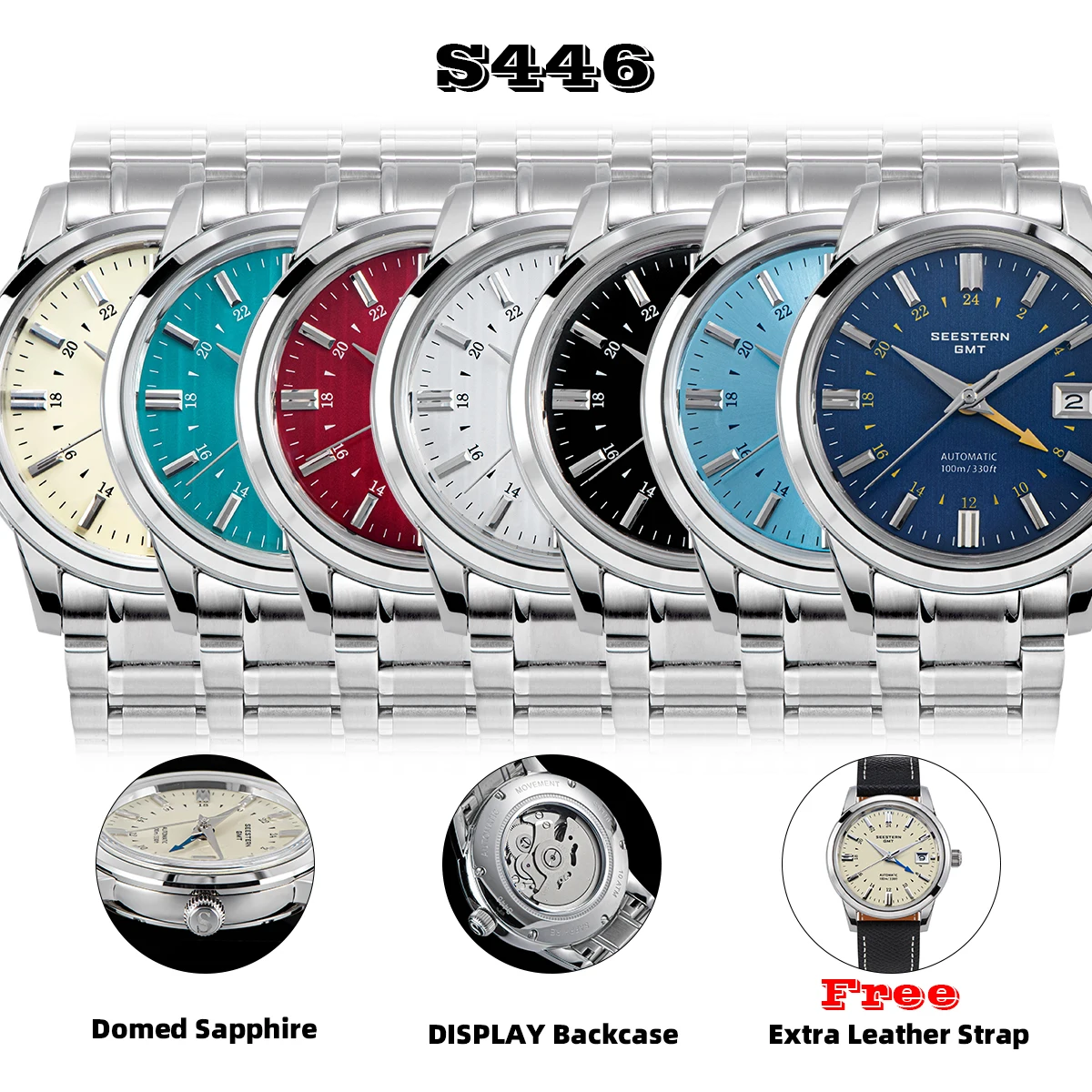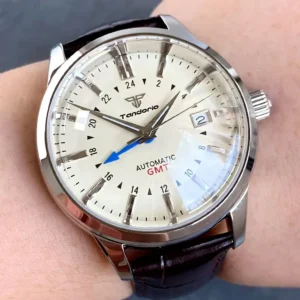Introduction
In today’s interconnected world, building applications that seamlessly work across different time zones has become a fundamental requirement rather than a luxury. The challenge of managing time across global systems impacts everything from meeting schedulers and e-commerce platforms to financial systems and communication tools.
Multi-timezone GMT functions are far more than just code snippets—they represent comprehensive strategies for handling time across geographical boundaries in ways that create reliable, consistent experiences for users worldwide. Whether you’re building a scheduling app, an international e-commerce platform, or a global communication system, understanding these concepts is critical to your application’s success.
Throughout this guide, we’ll journey from the foundational concepts of time zones to practical implementation strategies across various programming languages and systems. You’ll gain insights into:
- The fundamental differences between GMT, UTC, and local time zones
- Best practices for storing and displaying time data
- Implementation strategies in popular programming languages
- Database and system-level approaches to time management
- Common pitfalls and their solutions
The consequences of poorly implemented time zone handling can be severe—missed meetings, incorrect transaction records, and confused users are just the beginning. With over 4 billion internet users spread across every time zone, the need for robust time management has never been greater.
For developers working with multi-timezone functionality, understanding these principles ensures applications remain reliable regardless of where users access them from. Time-related bugs are among the most challenging to diagnose and fix, making prevention through proper implementation essential.
As we explore the intricacies of GMT functionality implementation, you’ll discover that precision in time handling mirrors the precision found in fine mechanical timepieces—both require meticulous attention to detail and an appreciation for the complex systems that make them work.
1. Core Concepts: Demystifying GMT, UTC, and Time Zones
Before diving into implementation details, we need to establish a solid understanding of the fundamental time concepts that underpin all multi-timezone systems.
Greenwich Mean Time (GMT)
Greenwich Mean Time originated in the mid-19th century when the Royal Observatory in Greenwich, London, established a standard time based on astronomical observations. As the location of the Prime Meridian (0° longitude), Greenwich became the reference point for global time coordination.
GMT was the world’s first widely adopted time standard, allowing for synchronized timekeeping across vast distances—particularly important for navigation and international commerce. While GMT was originally based on the average local solar time at the Royal Observatory, its modern usage is sometimes ambiguous.
Today, GMT is often used colloquially to refer to the time zone used in the United Kingdom during winter months (GMT/UTC+0), but in technical contexts, UTC has largely superseded it as the primary time standard.
Coordinated Universal Time (UTC)
UTC represents the modern global time standard maintained by a network of atomic clocks around the world. Unlike GMT’s astronomical origins, UTC provides extremely precise timekeeping with accuracy measured in nanoseconds.
A key feature of UTC is the occasional addition of “leap seconds” to account for irregularities in Earth’s rotation, ensuring UTC stays synchronized with mean solar time. These leap seconds are added when necessary (typically on New Year’s Eve or June 30th) based on observations by the International Earth Rotation Service.
For developers, UTC serves as the computational foundation for all time-related calculations. While GMT and UTC are currently aligned to the same hour, UTC is explicitly defined by atomic time standards, making it the preferred reference for technical applications.
Specialized timepieces with GMT functionality often incorporate UTC principles in their mechanical designs, allowing users to track multiple time zones simultaneously.
Local Time Zones
Local time zones are defined as offsets from UTC, typically expressed as UTC+/- hours. For example:
- New York operates on Eastern Time (UTC-5 or UTC-4 during Daylight Saving Time)
- London operates on GMT/UTC+0 (or UTC+1 during British Summer Time)
- Tokyo operates on Japan Standard Time (UTC+9)
The world is divided into theoretical 15° longitude segments, each representing roughly one hour of time difference. However, actual time zone boundaries often follow political borders rather than strict geographical lines.
The IANA Time Zone Database (often called “tzdata” or “Olson database”) serves as the authoritative source for time zone information, including historical changes and future scheduled adjustments. This database is regularly updated and used by most operating systems and programming languages.

Daylight Saving Time (DST)
Daylight Saving Time represents one of the most challenging aspects of time zone management. Introduced in many countries to extend evening daylight during summer months, DST creates temporal shifts that complicate time calculations.
During the “spring forward” transition, clocks advance by one hour (e.g., 2:00 AM instantly becomes 3:00 AM), creating a skipped hour that simply doesn’t exist in that time zone on that date. Conversely, during the “fall back” transition, the same hour occurs twice, creating ambiguity about which instance of that hour is being referenced.
These transitions vary globally:
- Some countries never observe DST
- Transition dates differ between hemispheres
- Some regions have abolished DST after previously observing it
- Political decisions can change DST rules with minimal notice
The historical development of timezone functionality in watches mirrors these complexities, with watchmakers developing increasingly sophisticated mechanisms to track these temporal variations.
For software systems, DST transitions create numerous edge cases that must be handled carefully, particularly for:
- Scheduled events occurring during transition periods
- Duration calculations that span DST boundaries
- Historical time records from periods with different DST rules
Understanding these core concepts provides the foundation for implementing robust multi-timezone systems that can handle the complexities of global time representation.
2. Essential Best Practices for Multi-Timezone Systems
Implementing effective multi-timezone functionality requires adhering to several critical best practices. These principles will help you avoid common pitfalls and build more reliable time-aware applications.
Golden Rule #1: Always Store Timestamps in UTC
The single most important practice for multi-timezone systems is storing all timestamps in UTC. This approach eliminates ambiguity and provides a consistent reference point regardless of where users or servers are located.
Benefits of UTC storage include:
- Elimination of DST-related ambiguities in stored data
- Simplified time comparisons and calculations
- Consistent sorting of chronological records
- Easier data migration between systems
Implementation approaches:
// JavaScript - Bad approach (storing in local time)
const localTimestamp = new Date();
// JavaScript - Good approach (storing in UTC)
const utcTimestamp = new Date().toISOString();
Database systems should be configured to store timestamps in UTC, either through data types like PostgreSQL’s TIMESTAMPTZ or through application-level conversion before storage.
Professional-grade GMT functionality in watches operates on similar principles, maintaining a stable reference time while allowing for local time display.
Golden Rule #2: Convert to Local Time Only at Display Time
Complement UTC storage by only converting timestamps to local time at the moment of display to users. This creates a clean separation between storage logic and presentation concerns.
This approach allows:
* Backend systems to operate exclusively in UTC
* Frontend interfaces to handle localization based on user context
* Consistent application logic independent of user location
Most modern frontend frameworks provide utilities for this conversion:
// Converting UTC to local time for display
const utcTimestamp = "2022-06-15T14:30:00Z";
const localDateTime = new Date(utcTimestamp).toLocaleString();

Managing User Time Zone Preferences
Applications should have a strategy for determining and storing user time zone preferences:
- Automatic detection: Use browser APIs like
Intl.DateTimeFormat().resolvedOptions().timeZoneto detect the user’s local time zone. - User selection: Provide an interface for users to manually select their preferred time zone.
- Persistence: Store the user’s time zone preference in their profile for consistent experience across sessions.
Balance automatic detection with user choice—travelers may want to view times in their home time zone rather than their current location.
The evolution of timezone tracking in professional applications shows similar user-centric design principles, allowing for personalized time display while maintaining accuracy.
Be Explicit: Never Assume a Time Zone
Ambiguity in time zone context leads to bugs and inconsistent behavior. Always be explicit about which time zone a timestamp refers to:
- Use ISO 8601 format with explicit time zone designators for text representations
- Include time zone information in function parameters and return values
- Document the expected time zone for all time-related functions
# Ambiguous - which time zone does this represent?
appointment_time = "2022-10-15 14:30"
# Explicit - clearly indicates UTC
appointment_time = "2022-10-15T14:30:00Z"
# Also explicit - includes offset information
appointment_time = "2022-10-15T09:30:00-05:00"
Keep Time Zone Data Updated
Time zone rules change regularly due to political decisions. Systems must stay current with these changes:
- Deploy regular updates to timezone databases (tzdata)
- Monitor for emergency timezone updates affecting your user base
- Consider how updates affect historical data interpretation
- Test system behavior around known upcoming timezone changes
For mission-critical systems, implementing a monitoring strategy for timezone database currency can prevent unexpected behavior when rules change.
3. Multi-Timezone Functions in Practice: Programming Language Examples
Different programming environments provide varying levels of support for time zone operations. This section examines practical implementation approaches across popular languages.
Fundamental Operations Across Languages
Regardless of language, several fundamental operations form the building blocks of multi-timezone functionality:
- Obtaining the current time in UTC
- Converting times between time zones
- Parsing time strings with zone information
- Formatting times for display in specific time zones
- Handling DST transitions and ambiguous times
The approach to these operations varies by language, but the core principles remain consistent. The longevity of mechanical GMT functionality in watches mirrors the need for reliability in these fundamental operations.
Python Implementation
Python offers strong time zone support through the datetime module, enhanced by libraries like pytz and the newer built-in zoneinfo (Python 3.9+).
Getting current UTC time:
from datetime import datetime, timezone
# Current time in UTC
now_utc = datetime.now(timezone.utc)
Converting between time zones:
from datetime import datetime
from zoneinfo import ZoneInfo # Python 3.9+
# Create a timezone-aware datetime
dt_utc = datetime(2022, 5, 15, 12, 30, tzinfo=ZoneInfo("UTC"))
# Convert to Tokyo time
dt_tokyo = dt_utc.astimezone(ZoneInfo("Asia/Tokyo"))
Handling DST transitions:
from datetime import datetime
from zoneinfo import ZoneInfo
# Creating a datetime during DST transition (ambiguous time)
try:
# Specify fold=0 for first occurrence, fold=1 for second occurrence
dt = datetime(2022, 11, 6, 1, 30, tzinfo=ZoneInfo("America/New_York"), fold=1)
except Exception as e:
print(f"Error handling DST transition: {e}")

JavaScript Implementation
JavaScript’s native Date object has limited timezone support, but modern libraries provide robust solutions.
Native Date limitations:
// JavaScript's Date object is always tied to the browser's local time zone
const now = new Date();
// To get UTC time, use UTC methods or toISOString()
const nowUtcString = now.toISOString();
Using modern libraries (Luxon):
// Using Luxon for better timezone support
const { DateTime } = luxon;
// Current time in UTC
const nowUtc = DateTime.now().toUTC();
// Converting to a specific timezone
const tokyoTime = nowUtc.setZone("Asia/Tokyo");
// Formatting for display
const formattedTokyoTime = tokyoTime.toLocaleString(DateTime.DATETIME_FULL);
Internationalization with Intl:
// Format a date in the user's locale and timezone
const date = new Date("2022-06-15T14:30:00Z");
const formatter = new Intl.DateTimeFormat('default', {
dateStyle: 'full',
timeStyle: 'long'
});
const localizedDate = formatter.format(date);
Durable GMT watches offer similar resilience to JavaScript libraries designed for timezone handling, providing consistent functionality across different environments.
Java Implementation
Java’s java.time package (introduced in Java 8) provides comprehensive timezone support with immutable objects for thread safety.
Working with ZonedDateTime:
import java.time.ZonedDateTime;
import java.time.ZoneId;
import java.time.format.DateTimeFormatter;
// Current time in UTC
ZonedDateTime utcNow = ZonedDateTime.now(ZoneId.of("UTC"));
// Convert to Tokyo time
ZonedDateTime tokyoTime = utcNow.withZoneSameInstant(ZoneId.of("Asia/Tokyo"));
// Format for display
DateTimeFormatter formatter = DateTimeFormatter.ofPattern("yyyy-MM-dd HH:mm:ss z");
String formatted = tokyoTime.format(formatter);
C#/.NET Implementation
C# offers several approaches to time zone handling, with DateTimeOffset generally preferred over DateTime for timezone-aware operations.
Using DateTimeOffset:
// Current time in UTC
DateTimeOffset utcNow = DateTimeOffset.UtcNow;
// Convert to specific timezone
TimeZoneInfo tokyoZone = TimeZoneInfo.FindSystemTimeZoneById("Tokyo Standard Time");
DateTimeOffset tokyoTime = TimeZoneInfo.ConvertTime(utcNow, tokyoZone);
// Format for display
string formatted = tokyoTime.ToString("yyyy-MM-dd HH:mm:ss zzz");
Handling ambiguous times:
// Working with ambiguous times (fall back transition)
TimeZoneInfo easternZone = TimeZoneInfo.FindSystemTimeZoneById("Eastern Standard Time");
DateTime ambiguousTime = new DateTime(2022, 11, 6, 1, 30, 0);
bool isAmbiguous = easternZone.IsAmbiguousTime(ambiguousTime);
if (isAmbiguous) {
// Handle ambiguous time (specify whether first or second occurrence)
DateTimeOffset firstOccurrence = new DateTimeOffset(ambiguousTime,
easternZone.GetUtcOffset(ambiguousTime.AddHours(-1)));
}
The historical context of timezone tracking innovations provides interesting parallels to how these programming languages have evolved their time handling capabilities over the years.
4. Working with Time Zones in Databases and Operating Systems
Beyond application code, effective multi-timezone systems require appropriate database configuration and operating system support.
Database Data Type Selection
Different databases offer varying levels of time zone support through specialized data types:
| Database | Time Zone Aware Type | Naïve Type | Notes |
|---|---|---|---|
| PostgreSQL | TIMESTAMPTZ | TIMESTAMP | TIMESTAMPTZ automatically converts to UTC for storage |
| MySQL | TIMESTAMP | DATETIME | TIMESTAMP converts to UTC but has year limitations |
| SQL Server | DATETIMEOFFSET | DATETIME | DATETIMEOFFSET includes explicit offset information |
| SQLite | – | TIMESTAMP | No native time zone support; handle in application |
Choosing the right data type is critical for maintaining time zone integrity. The development of timezone functionality parallels database evolution, with both focused on reliability and precision.
Database-Specific Time Zone Handling
PostgreSQL example:
-- Create table with timezone-aware timestamp
CREATE TABLE events (
id SERIAL PRIMARY KEY,
title TEXT,
event_time TIMESTAMPTZ NOT NULL
);
-- Insert with explicit timezone
INSERT INTO events (title, event_time)
VALUES ('Conference Call', '2022-06-15 09:00:00-04:00');
-- Query converting to different timezone
SELECT title,
event_time AT TIME ZONE 'UTC' AS utc_time,
event_time AT TIME ZONE 'Asia/Tokyo' AS tokyo_time
FROM events;

MySQL example:
-- Set session time zone for proper conversion
SET time_zone = '+00:00';
-- Create table with TIMESTAMP for UTC storage
CREATE TABLE appointments (
id INT PRIMARY KEY AUTO_INCREMENT,
description VARCHAR(255),
appointment_time TIMESTAMP NOT NULL
);
-- Insert data (automatically converted to UTC)
INSERT INTO appointments (description, appointment_time)
VALUES ('Doctor Visit', '2022-06-15 14:30:00');
-- Query with conversion to specific time zone
SELECT description,
appointment_time AS utc_time,
CONVERT_TZ(appointment_time, '+00:00', '+09:00') AS tokyo_time
FROM appointments;
For advanced time tracking functionality, database configuration must align with application requirements, similar to how perpetual calendar watches need precise adjustment mechanisms.
Application-Database Time Zone Alignment
Ensuring consistency between application and database time zones prevents subtle conversion issues:
- Set database connections to use UTC for session time zone when possible
- Document time zone expectations in database schemas
- Be consistent with time formats in queries and application code
- Consider explicit conversions in queries for clarity
// Java example setting connection timezone to UTC
Properties props = new Properties();
props.setProperty("user", "username");
props.setProperty("password", "password");
props.setProperty("timezone", "UTC");
Connection conn = DriverManager.getConnection("jdbc:postgresql://localhost/mydb", props);
Operating System Time Zone Configuration
Application servers should generally use UTC as their system time zone to avoid inconsistencies:
- For Linux:
sudo timedatectl set-timezone UTC - For Windows: Change through Time Zone settings to “(UTC) Coordinated Universal Time”
- For containerized applications: Set timezone in container configuration
The development of timezone tracking tools shows similar considerations for environmental stability, ensuring consistent performance regardless of conditions.
Time Zone APIs and External Services
For applications needing time zone lookup by geographic location:
- Google Time Zone API – provides time zone information for a given location
- GeoNames Time Zone API – offers free time zone lookups with limitations
- TimeZoneDB – provides time zone data with free and premium options
When using external services, implement caching and fallback mechanisms to handle service disruptions.
5. Navigating Common Multi-Timezone Pitfalls and Solutions
Even with best practices, time zone handling presents specific challenges. This section addresses common pitfalls and their solutions.
DST Transition Challenges
The “spring forward” and “fall back” transitions of Daylight Saving Time create uniquely challenging scenarios.
Handling the duplicate “fall back” hour:
// Using Luxon to disambiguate the repeated hour
const { DateTime } = luxon;
// Creating a datetime during fall back (1:30 AM occurs twice)
// The 'earlier' option gives the first occurrence (DST still active)
const firstOccurrence = DateTime.fromObject(
{ year: 2022, month: 11, day: 6, hour: 1, minute: 30 },
{ zone: 'America/New_York' }
).setZone('America/New_York', { keepLocalTime: true, disambiguate: 'earlier' });
// The 'later' option gives the second occurrence (after DST ends)
const secondOccurrence = DateTime.fromObject(
{ year: 2022, month: 11, day: 6, hour: 1, minute: 30 },
{ zone: 'America/New_York' }
).setZone('America/New_York', { keepLocalTime: true, disambiguate: 'later' });
Managing the skipped “spring forward” hour:
from datetime import datetime
from zoneinfo import ZoneInfo
from time import sleep
# Attempting to create a non-existent time during spring forward
try:
# 2:30 AM doesn't exist on spring forward day (2:00 AM jumps to 3:00 AM)
non_existent = datetime(2022, 3, 13, 2, 30, tzinfo=ZoneInfo("America/New_York"))
except Exception as e:
# Handle the non-existent time appropriately
# e.g., round to nearest valid time
valid_time = datetime(2022, 3, 13, 3, 0, tzinfo=ZoneInfo("America/New_York"))
The evolution of timezone handling in technical applications parallels how these edge cases are addressed in modern software.

Mixed Time Zone Confusion
Mixing explicit and implicit time zones is a common source of bugs:
Problem:
// Mixed timezone usage creates bugs
const utcDate = new Date("2022-06-15T14:30:00Z"); // Explicit UTC
const localDate = new Date(2022, 5, 15, 14, 30); // Implicit local time
const mixedResult = utcDate.getTime() === localDate.getTime(); // Likely false!
Solution:
// Consistent timezone usage
const utcDate = new Date("2022-06-15T14:30:00Z");
// Convert explicitly to UTC if comparison needed
const localDateConvertedToUtc = new Date(Date.UTC(2022, 5, 15, 14, 30));
const correctComparison = utcDate.getTime() === localDateConvertedToUtc.getTime();
Duration Calculation Errors
Calculating durations across DST boundaries often produces unexpected results:
Problem:
// Naïve duration calculation across DST boundary
const start = new Date("2022-03-12T12:00:00"); // Day before spring forward
const end = new Date("2022-03-13T12:00:00"); // Day of spring forward
const durationHours = (end - start) / (60 * 60 * 1000); // Might not be exactly 24!
Solution:
// Using a library that handles DST transitions
const { DateTime, Interval } = luxon;
const start = DateTime.fromISO("2022-03-12T12:00:00", { zone: "America/New_York" });
const end = DateTime.fromISO("2022-03-13T12:00:00", { zone: "America/New_York" });
const interval = Interval.fromDateTimes(start, end);
// Correctly accounts for DST transition
const durationHours = interval.length('hours');
The historical context for timezone functionality shows similar challenges in mechanical watch design, particularly with timezone adjustment mechanisms.
Time Zone Data Currency Issues
Operating with outdated time zone data can lead to incorrect time calculations:
Detection approach:
// Checking if timezone data might be outdated
function isTimeZoneDataOutdated() {
const currentYear = new Date().getFullYear();
// Create a date for checking DST transitions in the current year
const marchDate = new Date(currentYear, 2, 14); // March 14th
const novemberDate = new Date(currentYear, 10, 7); // November 7th
// Check if transitions happen on expected dates for North America
// This is a simplified check and would need adjustment for other regions
try {
// Test known DST transitions for the current year
// Logic would need to be updated for different regions
// Return true if transitions don't match expectations
return false;
} catch (e) {
// Error might indicate outdated data
return true;
}
}
Data Exchange and API Communication
Clear communication of time zone context in APIs prevents integration issues:
Best practice for REST APIs:
{
"event": {
"title": "Project Kickoff",
"timestamp": "2022-06-15T14:30:00Z",
"timezone": "America/New_York",
"localTime": "2022-06-15T10:30:00-04:00"
}
}
Including both UTC time and local time with offset provides maximum clarity and flexibility for API consumers.
Specialized timezone tracking options reflect similar attention to clear communication of time information, allowing users to interpret time data accurately across contexts.
6. Real-World Applications and Industry-Specific Considerations
Different industries face unique time zone challenges that require specialized approaches.
Global Scheduling Systems
Meeting and appointment coordination across time zones presents particular challenges:
- Clearly indicating which time zone an event is scheduled in
- Accommodating recurring events that span DST transitions
- Providing visual cues about working hours in different regions
- Supporting personal time zone preferences separate from current location
Effective scheduling interfaces often include:
* Time zone selectors with common options listed first
* Dual display of time in both local and selected time zones
* Visual indicators for working hours across team members’ time zones
* Warnings about unusual meeting times (e.g., very early or late)
Date tracking across timezones is similarly important in watches designed for international business travelers who need to track meetings in multiple locations.
E-commerce and Order Processing
Global e-commerce platforms must carefully manage time for:
- Order timestamps and fulfillment timing
- Time-limited promotional offers across global markets
- Shipping estimates that account for time zones and business days
- Transaction records that satisfy regulatory requirements
Strategies include:
* Displaying countdown timers adjusted to the user’s local time
* Calculating shipping cut-off times based on warehouse locations
* Maintaining all financial records in UTC with local time display options
* Clearly communicating time zones for support hours and service availability

Financial and Trading Systems
Financial applications have especially stringent requirements for time precision:
- Trading windows that open and close at specific times in multiple markets
- Transaction timestamps that may have regulatory compliance requirements
- Interest calculations that depend on precise timing
- Settlement processes that cross international date lines
Financial systems typically implement:
* Microsecond-level timestamp precision
* Redundant time sources with synchronization verification
* Comprehensive audit trails including original and UTC timestamps
* Clear indication of the governing time zone for contracts and agreements
The timeline of timezone tracking innovations shows parallels to financial systems, with both evolving to meet increasing demands for precision and reliability.
Logging and Analytics
Effective logging across distributed systems requires consistent time approaches:
- Standardizing all log entries to UTC timestamps
- Including sufficient precision for event sequencing
- Maintaining original local time context when relevant
- Ensuring time synchronization across logging sources
Best practices include:
* Using structured logging with explicit time zone fields
* Implementing NTP synchronization across all system components
* Including correlation IDs to track requests across services
* Providing visualization tools that convert to viewer’s time zone
Communications and Messaging
Messaging systems must balance accurate timing with user-friendly displays:
- Showing message send/receive times in the recipient’s local time
- Handling messages sent across date boundaries naturally
- Managing scheduled message delivery across time zones
- Providing clear timestamps for message status changes
Effective implementations include:
* Storing message timestamps in UTC with sender’s original time zone
* Displaying relative times (“2 hours ago”) for recent messages
* Converting to absolute local time for older messages
* Clear indication when messages are scheduled for future delivery
7. Advanced Time Zone Topics for Specialized Systems
Some systems require more sophisticated time handling approaches for specialized needs.
High-Precision Time Synchronization
Systems requiring microsecond-level precision need specialized time synchronization:
- Network Time Protocol (NTP) provides millisecond accuracy in typical configurations
- Precision Time Protocol (PTP) can achieve microsecond or better accuracy
- GPS time sources offer highly accurate external references
- Atomic clock references for ultra-precise timing needs
Configuration example for NTP on Linux:
# Install NTP
sudo apt install ntp
# Edit configuration to use specific time servers
sudo nano /etc/ntp.conf
# Example configuration with multiple time sources
server 0.pool.ntp.org iburst
server 1.pool.ntp.org iburst
server 2.pool.ntp.org iburst
server 3.pool.ntp.org iburst
# Restart service
sudo systemctl restart ntp
Specialized timezone functionality for travelers operates on similar principles of maintaining accurate reference time while supporting multiple time displays.
Historical Time Zone Record-Keeping
Working with historical dates presents unique challenges:
- Time zone rules have changed frequently throughout history
- Some regions have changed their standard time zone
- DST observance has varied widely over time
- Political decisions can retroactively change historical interpretations
Libraries like tzdata include historical rule changes, but implementations must handle data ambiguities:
from datetime import datetime
from zoneinfo import ZoneInfo
# Historical date when rules might have been different
historical_date = datetime(1945, 8, 15, 12, 0, tzinfo=ZoneInfo("Asia/Tokyo"))
# Converting to modern interpretation of UTC for that historical moment
historical_utc = historical_date.astimezone(ZoneInfo("UTC"))
Custom Time Zone Rules
Organizations sometimes need to implement custom time zone rules:
- Internal time standards that differ from geographic zones
- Special handling for international operations centers
- Custom business calendars with non-standard hours
- Hypothetical time scenarios for planning or simulation
Implementation typically requires extending standard libraries:
// Example of registering a custom timezone rule in Java
ZoneRules customRules = ... // Define custom rules
ZoneId customZone = ZoneId.of("Custom/OrganizationTime");
ZoneRulesProvider.registerProvider(new ZoneRulesProvider() {
@Override
protected Set<String> provideZoneIds() {
return Set.of("Custom/OrganizationTime");
}
@Override
protected ZoneRules provideRules(String zoneId, boolean forCaching) {
if ("Custom/OrganizationTime".equals(zoneId)) {
return customRules;
}
throw new ZoneRulesException("Unknown time zone ID: " + zoneId);
}
});
Time in Multi-Region Cloud Deployments
Cloud systems distributed across multiple regions require careful time coordination:
- Ensuring consistent time configuration across all regions
- Handling region-specific services with different time behaviors
- Coordinating events across regions with different time policies
- Planning for region failover without time discontinuities
Best practices include:
* Using cloud provider’s time synchronization services when available
* Implementing consistent UTC-based logging across all regions
* Including region information alongside timestamps
* Testing failover scenarios with attention to time consistency
8. Implementing Multi-Timezone Support: A Practical Roadmap
Implementing robust time zone support in an existing application requires a structured approach.
Assessment Phase
Begin by thoroughly understanding your current system:
- Identify all components that create, store, or display time data
- Map existing time zone assumptions throughout the codebase
- Audit database schemas and existing timestamp storage
- Document API contracts with time-related parameters or responses
- Gather regional requirements from stakeholders and users
Key questions to answer:
* Are timestamps currently stored with or without time zone information?
* How are user time zones currently determined and applied?
* What edge cases (like DST transitions) are already handled?
* Which systems interact with your application’s time data?
Design Phase
Based on the assessment, create a comprehensive design:
- Establish time zone storage and handling policies
- Create a conversion strategy for existing data
- Define user preference management approach
- Plan for time zone data updates
- Design testing strategy for time-sensitive operations
Documentation should include:
* Time zone handling principles for the application
* Data migration plans for existing timestamps
* API changes needed to support explicit time zones
* User experience updates for time selection and display
Implementation Phase
Execute the design with careful attention to detail:
- Refactor timestamp storage to use UTC consistently
- Update APIs to include explicit time zone information
- Implement user interfaces for time zone preferences
- Create conversion utilities for consistent handling
- Update display formatting to reflect local time appropriately
Example implementation checklist:
– [ ] Update database schemas to use time zone aware types
– [ ] Create migration scripts for existing timestamp data
– [ ] Implement standardized time conversion utilities
– [ ] Update API contracts to include time zone information
– [ ] Develop user interfaces for time zone selection
– [ ] Add time zone context to logging and error reporting
Classic Automatic Dress Watches, Day Date Automatic Watches, Perpetual Calendar Automatic Watches
Price range: $540.60 through $574.60 Select options This product has multiple variants. The options may be chosen on the product pageClassic Automatic Dress Watches, GMT Automatic Watches, GMT Pilot Watches
Price range: $1,240.86 through $1,463.33 Select options This product has multiple variants. The options may be chosen on the product pageDay Date Automatic Watches, Gold Tone Automatic Watches
$138.24 Select options This product has multiple variants. The options may be chosen on the product pageProfessional Spec Dive Watches, Titanium Automatic Watches
$574.74 Select options This product has multiple variants. The options may be chosen on the product pageClassic Automatic Dress Watches, GMT Automatic Watches, GMT Dive Watches
Price range: $468.93 through $552.94 Select options This product has multiple variants. The options may be chosen on the product pageRugged Automatic Watches, Unique Automatic Watches
Price range: $228.96 through $231.10 Select options This product has multiple variants. The options may be chosen on the product page
Testing Phase
Comprehensive testing is essential for time zone functionality:
- Create tests covering DST transitions in multiple regions
- Verify behavior when users change their time zone preferences
- Test data migration scripts with historical data
- Validate time calculations across time zone boundaries
- Perform user acceptance testing with international users
Test special cases:
* Events scheduled during DST transitions
* Long-running processes that span time zone changes
* Database queries that filter or sort by timestamp
* Calendar displays showing multi-day views across DST boundaries
Maintenance Phase
Time zone management requires ongoing attention:
- Monitor for time zone rule changes from political decisions
- Update tzdata on a regular schedule
- Audit logs for unexpected time zone behavior
- Gather user feedback about time-related features
Establish a maintenance checklist:
– [ ] Schedule quarterly tzdata updates
– [ ] Monitor timezone announcements from relevant governments
– [ ] Create alerting for time-related errors or anomalies
– [ ] Maintain documentation of time handling approaches
9. Resources and Tools for Time Zone Management
These resources will help you implement and maintain robust time zone functionality.
Essential Libraries and Frameworks
JavaScript:
* Luxon – Modern, immutable date/time library with robust timezone support
* date-fns-tz – Timezone additions to the functional date-fns library
* Moment Timezone – Timezone support for Moment.js (though consider newer alternatives)
Python:
* pytz – The standard timezone library for Python
* zoneinfo – Built-in timezone support in Python 3.9+
* dateutil – Extended datetime functionality including timezone support
Java:
* java.time – The standard JDK package for date/time (Java 8+)
* ThreeTen-Extra – Additional features beyond standard java.time
* Joda-Time – Legacy but still useful for older Java versions
C#/.NET:
* TimeZoneConverter – Mapping between IANA, Windows, and Rails time zone names
* NodaTime – Alternative date/time API with robust timezone support
Time Zone Data Sources
- IANA Time Zone Database – The authoritative source for timezone data
- timeanddate.com API – Commercial API for timezone and time-related data
- GeoNames – Free web service for timezone lookup by geographic coordinates
- Google Time Zone API – Returns time zone information for a location
Standards and Specifications
- ISO 8601 – International standard for date and time representation
- RFC 3339 – Internet specification for timestamp formats
- W3C Date and Time Formats – Web standards for date and time representation
- Unicode CLDR – Common Locale Data Repository with timezone display names
Testing and Debugging Tools
- WorldTimeBuddy – Visual tool for comparing multiple time zones
- Every Time Zone – Simple visual time zone comparison tool
- Time Zone Converter – Tool for converting between specific times in different zones
- Cronitor – Monitoring tool that understands time zones for job scheduling
- TheTrueTime – For testing applications against a highly accurate time source
Conclusion: Building Truly Global Applications with Confidence
Mastering multi-timezone functionality is no small achievement, but the principles we’ve covered provide a solid foundation for creating truly global applications. By consistently storing times in UTC, converting only at display time, and staying vigilant about time zone data updates, you can avoid the most common pitfalls that plague time-sensitive systems.
Remember that proper time handling directly impacts user experience—missed meetings, confused schedules, and incorrect records all erode trust in your application. With the strategies outlined in this guide, you can build systems that quietly handle the complexities of global time, allowing users to focus on their tasks rather than worrying about time zone conversions.
The most important actions to take immediately:
- Audit your existing timestamp storage and convert to UTC if needed
- Ensure explicit time zone information in all APIs and interfaces
- Implement proper user time zone preference handling
- Create a testing plan that covers DST transitions and edge cases
Just as Sharp Aspect celebrates precision in our timepieces, precision in your application’s time handling will pay dividends in reliability and user satisfaction. The complexity of time zones may seem daunting, but with systematic implementation of these best practices, you can achieve the same level of accuracy and dependability that watch enthusiasts expect from a fine mechanical timepiece.







